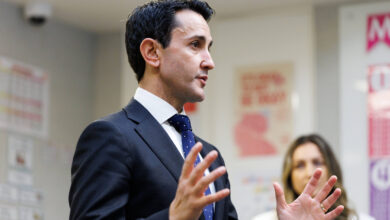School ManagementTop Stories
Single-sex schools: for whom the death knell tolls?

What do our three most recent male Prime Ministers - Malcolm Turnbull, Tony Abbott and Kevin Rudd - have in common? Certainly not much of their politics. They all did, however, at one point or another, attend single-sex schools: Sydney Grammar School, St Ignatius' College Riverview, and Marist Brothers College Ashgrove, respectively.
Please login below to view content or subscribe now.





The Dutch study published in School Effectiveness and School Improvement (mentioned above) only analysed data for boys and girls in co-educational schools. The study makes no findings or comments on single-sex schools, except to note that the data for single-sex schools was excluded from the study.
The finding that boys’ reading performance is higher in co-ed schools where there are at least 60% girls may be, said the researchers, because of the positive effect of girls on classroom processes and the schoolwide learning climate. As they note, previous studies have found that girls enjoy reading more, are more frequent readers, and are more motivated to perform well at school.
On the other hand, said the Dutch researchers, boys are more likely than girls to exhibit social and behavioural problems. Studies show that classes containing a larger proportion of boys are more likely to experience disruptions. Boys perform better in co-ed schools with a larger proportion of girls because these schools have a more study-oriented culture.
The Dutch study also notes, however, that boys make relatively large learning gains in well-organised classrooms. Given that their study did not include single-sex schools, many of which are among the highest performing schools in Australia and New Zealand in terms of PISA scores, numeracy and literacy testing, and tertiary entrance results (including for boys in reading and humanities subjects), this suggests that the inclusion of single-sex schools would have led to different conclusions for both boys and girls.
The ACER report (also mentioned above), which analysed numeracy and literacy (NAPLAN) data for Years 3, 5 and 7, found that boys and girls at single-sex schools achieved higher scores than co-ed students even when socio-economic status was taken into account. Year 7 boys at single-sex schools were, on average, 1.6 terms ahead of co-ed students (including girls) in reading and 3.9 terms ahead in maths. Girls at single-sex schools were 4.2 terms ahead of co-ed students in reading and 2.8 terms ahead in maths.
The Dutch study only considered PISA reading scores, where girls have long outperformed boys. The results for science and mathematics, which form part of the STEM fields in which girls and women are grossly underrepresented were not analysed. Indeed, the researchers noted this as one of the “drawbacks” of the study, along with the fact that students were not randomly assigned to schools or classes (the gold standard of educational research), and nor could they control for students’ prior academic achievement at primary school.
The most recent Australian statistics show that only 5.9% of Year 12 girls study physics in Australia compared with 21.0% of boys. In girls’ schools, however, the lack of gender stereotyping leads to significantly larger numbers of girls taking advanced maths, physics and other sciences. For instance, at Brisbane Girls Grammar School, 90% of the 2016 Year 12 cohort took at least one science subject, 25% took physics, and 40% are now undertaking a science-based university degree.
Finally, it should be noted that a 2017 study led by Professor Christian Dustmann of University College London, ‘Why single-sex schools are more successful’, has come to exactly the opposite conclusion that than of the Dutch researchers. Dustmann’s study of academic results in South Korea, where students are randomly assigned to single-sex and co-ed senior high schools (for Years 10-12), found not only that students at single-sex schools significantly outperformed those at co-ed schools on university entrance exams from 1996 to 2009, but also that academic results for both boys and girls dropped when some single-sex schools were converted to co-ed. In fact, once classes changed from 100% female to 50% female, girls’ achievement in languages (Korean and English) fell by 8-15% of a standard deviation. Dustmann and his colleagues concluded that “the net effect of having single-sex peers for three years is strongly positive for girls” and that “the conversion of pupil gender type from single-sex to coed leads to worse academic outcomes for both boys and girls”.
Jan Richardson
Director of Research
Alliance of Girls’ Schools Australasia